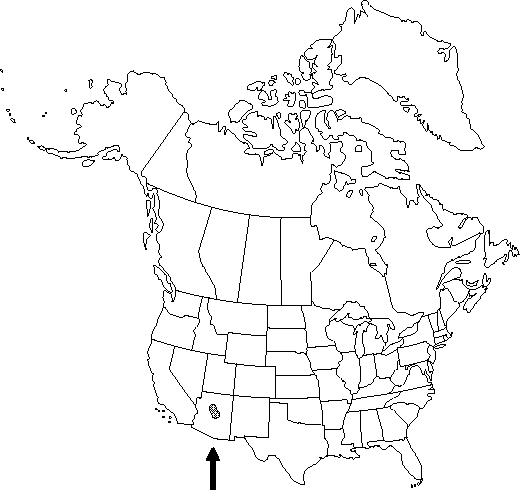Cimicifuga arizonica
Proc. Amer. Acad. Arts 20: 352. 1885.
Stems 70-150 cm, glabrous. Leaves: petiole rounded abaxially, 10-35 cm, usually deeply and broadly grooved adaxially, glabrous. Leaf blade 2(-3)-ternately compound; leaflets (9-)21-45; terminal leaflet of central segment ovate or oblong-ovate, 3-lobed, 8-17.5 × 6-12.5 cm, with 3 prominent veins arising basally, base somewhat cordate, margins serrate to dentate-serrate, teeth gland-tipped, apex acuminate, rarely nearly truncate, surfaces nearly glabrous; other leaflets 7-12 × 4-7 cm. Inflorescences erect to lax panicles of 2-8 racemelike branches, 10-45 cm, short-pubescent distally; bracts 3, subtending pedicel, central bract larger and elongate-subulate, 3-4 mm, lateral bracts ovate-deltate; pedicel to 8 mm, pubescent, bracteoles absent. Flowers: sepals 5, outer 2 greenish yellow, inner creamy white; petals (0-)2, white, ovate to obovate, 3 mm, long-clawed; nectary absent; stamens 40-75; filaments 5-8 mm; pistils 1-3(-4), sessile, glandular; style long, hooked; stigma minute, 0.2 mm wide. Follicles (1-)2(-3), sessile, oblong, ± compressed laterally, 10-18 mm, membranous walled. Seeds pale brown, lenticular, covering of scales giving cylindric appearance, 2.5-3 mm, loosely covered with pale brown, membranous scales.
Phenology: Flowering summer (Jul–Aug).
Habitat: Rich soil and deep shade in moist wooded ravines
Elevation: 1600-2100 m
Distribution

Ariz.
Discussion
Of conservation concern.
Cimicifuga arizonica is known from only a few localities in central Arizona. It grows in moist, loamy soil of the ecotone between the coniferous forest and the riparian habitat and does not spread into the forest. It appears to be adapted to deep shade.
Selected References
None.